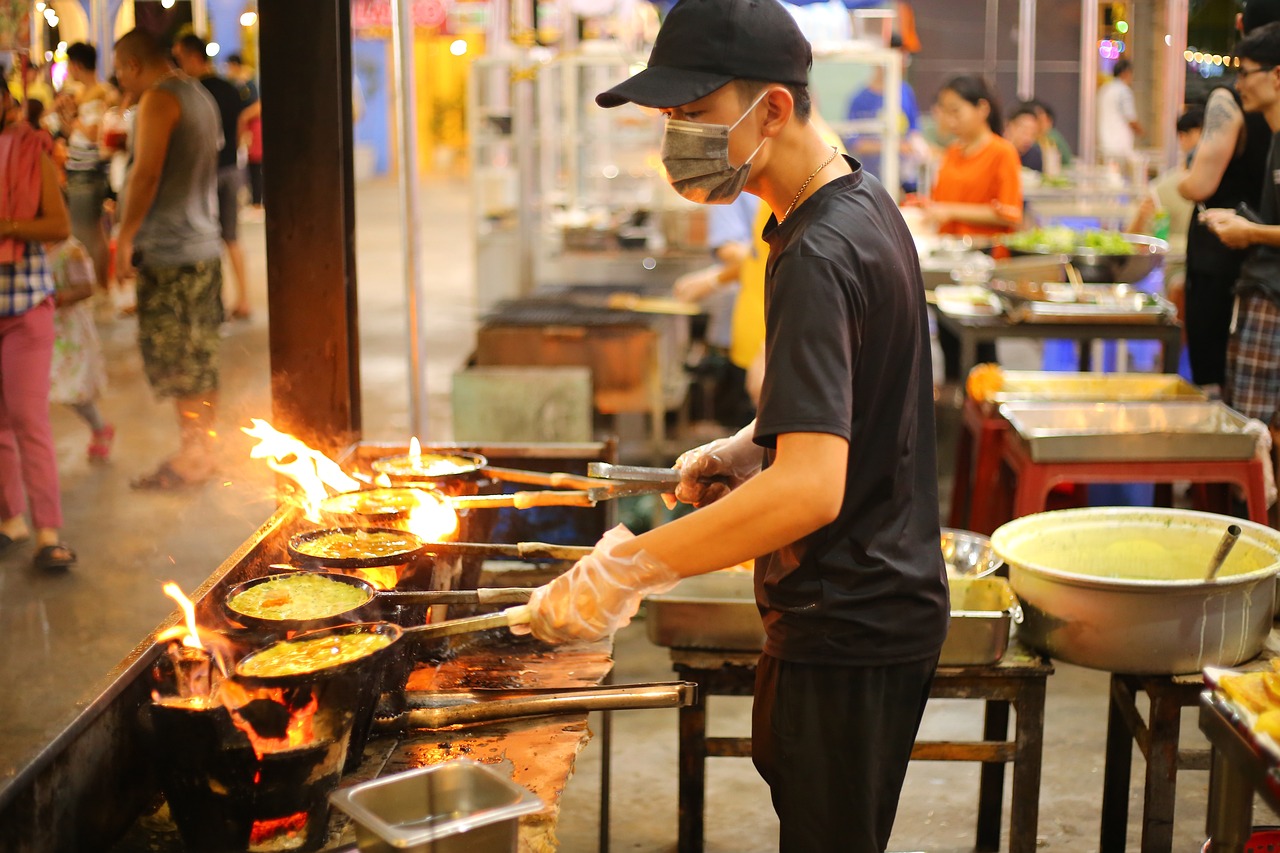The Michelin Guide is synonymous with fine dining. But it’s not just about fancy restaurants.
The guide has evolved to include a wide range of dining experiences, from street food stalls to
humble eateries. This is because Michelin values culinary artistry, authenticity and accessibility,
no matter where.
Michelin’s Philosophy is Excellence Beyond the Ambience
At its heart the Michelin Guide is about exceptional food and experience, not just fancy surroundings. Many people associate Michelin stars with white tablecloths and chandeliers. But the inspectors focus on the food, the chef and the consistency of the experience. The five criteria Michelin inspectors use to award stars are:
- Quality of Ingredients: Freshness and provenance of ingredients.
- Mastery of Flavours and Cooking Techniques: Ability to extract the best from each
ingredient. - Personality of the Chef in the Cuisine: Unique and creative expression in the dishes.
- Value for Money: Balance of quality and price.
- Consistency: Same high standards across visits.
These criteria allow the guide to award excellence in all sorts of places, from fancy restaurants to
street food stalls.
Examples of Street Food with Michelin Stars
Including street food in the Michelin Guide is about recognising excellence in all forms. Street food is the soul of a city, offering authentic flavours that reflect local traditions and culture. By awarding stars to street food vendors Michelin is breaking down barriers, showing that great food isn’t just for fancy restaurants.
Michelin-Rated Street Food Venues
- Hawker Chan, Singapore – In 2016 Hawker Chan’s street food stall, famous for its soya sauce chicken rice, became the first street food vendor to get a Michelin star. Located in Singapore’s Chinatown Complex this unassuming stall serves a dish that’s both affordable and beautifully crafted. Prices start from a few dollars, it changed the perception of Michelin food.
- Raan Jay Fai, Bangkok, Thailand – Known as the “Queen of Thai Street Food” Jay Fai got a Michelin star for her wok-fried dishes, including the famous crab omelet. She operates from a small shop in Bangkok and uses traditional techniques and top quality ingredients to serve locals and tourists alike.
- Baan Nual, Bangkok, Thailand – This obscure gem in Bangkok shows how far and wide the Michelin Guide goes. Its inclusion in the guide means exceptional, affordable local food in unglamorous places.
- Tim Ho Wan, Hong Kong – Although now a global dim sum chain, Tim Ho Wan’s original Mong Kok shop got a Michelin star for its quality at a price. The restaurant started as a small no-frills shop and became famous for its barbecue pork buns and other dim sum staples.
- Michelin in Taiwan’s Night Markets -The Michelin Guide’s coverage of Taiwan’s food scene has led to several night market vendors getting stars. Stalls like Liu Sha Bao which serves sweet custard buns have gone global thanks to the guide’s recognition.
Fine Dining is Still Synonymous with Michelin
While street food expands the Michelin universe, fine dining is still at the core of the guide. One of the fine dining excellence is Apéritif Restaurant in Bali, Indonesia. Located in the lush greenery of Ubud, Apéritif offers a luxurious dining experience with modern European cuisine with an Indonesian touch.
Run by Executive Chef Nic Vanderbeeken the restaurant focuses on innovative techniques and top quality ingredients sourced locally and internationally. The eight-course degustation menu paired with an extensive wine list is the epitome of fine dining that Michelin looks for. Apéritif is the ultimate expression of what Michelin looks for in fine dining: culinary creativity, service and ambiance.
The Global Effect of Michelin’s Inclusivity
By giving stars to street food vendors and fine dining restaurants alike, Michelin has changed the world. This inclusivity means that great food is everywhere, from hawker centers in Singapore to dining rooms in Bali.
Culinary Tourism
The Michelin Guide’s coverage of street food and regional cuisine has boosted culinary tourism.
Foodies now travel the world to experience both ends of the dining spectrum. Destinations like Bangkok, Singapore and Taipei have become foodie meccas for people to try Michelin recognized street food and traditional food.
Preserving Local Food Culture
Michelin’s recognition brings international attention to local food culture which often helps to preserve it. Street food vendors who get stars can sustain their craft and even inspire the next generation of chefs. This recognition raises the status of local cuisine so it remains alive and loved.
Busting the myths
By showing the artistry and excellence of street food, Michelin breaks the myth that good food has to be expensive or exclusive. This democratisation of food allows more people to experience Michelin recommended food and hence a wider appreciation of culinary innovation.
Luxury and Authenticity
The Michelin Guide’s coverage of street food and fine dining shows that it’s all about the full
spectrum of food. Whether it’s the beautifully plated dishes with fitted table cloths at Apéritif Restaurant or the humble crab omelet from Raan Jay Fai, Michelin believes food can cross boundaries and bring people together.
This balance of luxury and authenticity makes the Michelin Guide a true reflection of global culinary excellence. By valuing craftsmanship over ambiance and quality over price, Michelin means its stars are a symbol of the best food in the world – whether served on fine china or a paper plate.

